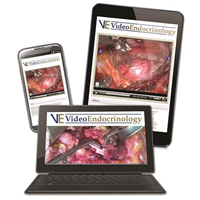Abstract
Background
Clostridium difficile (CD) is the most common pathogen causing nosocomial diarrhea. The clinical presentation ranges from mild diarrhea to severe complications, including pseudomembranous colitis, toxic megacolon, sepsis, and multi-organ failure. When the disease takes a fulminant course, death ensues rapidly in severe and complex cases. Preventive screening or current prophylactic therapies are not useful. Therefore, this study was conducted to detect risk factors for a fulminant CD infection (CDI) in patients undergoing cardiac surgery.
Methods
Between April 1999 and April 2011, a total of 41,466 patients underwent cardiac surgery at our institution. A review of our hospital database revealed 1256 patients (3.0%) with post-operative diarrheal disease who tested positive for CD; these patients comprised the cohort of this observational study. A fulminant CDI occurred in 153 of these patients (12.2%), which was diagnosed on the basis of gastrointestinal complications, e.g. pseudomembranous colitis, and/or the need for post-cardiac surgery laparotomy. Demographic, peri-operative, and survival data were analyzed, and predictors of a fulminant CDI were assessed by binary logistic regression analysis.
Results
The 30-day mortality was 6.1% (n = 77) for the entire cohort, with significantly higher mortality among patients with a fulminant CDI (21.6% vs. 4.0%, p < 0.001). Overall mortality (27.7%, n = 348) was also higher for patients with a fulminant course of the disease (63.4% vs. 22.8%, p < 0.001), and a laparotomy was required in 36.6% (n = 56) of the fulminant cases. Independent predictors of a fulminant CDI were: diabetes mellitus type 2 (OR 1.74, CI 1.15–2.63, p = 0.008), pre-operative ventilation (OR 3.52, CI 1.32–9.35, p = 0.012), utilization of more than 8 units of red blood cell concentrates (OR 1.95, CI 1.01–3.76, p = 0.046) or of more than 5 fresh-frozen plasma units (OR 3.38, CI 2.06–5.54, p < 0.001), and a cross-clamp time > 130 min (OR 1.93, CI 1.12–3.33, p = 0.017).
Conclusions
We identified several independent risk factors for the development of a fulminant CDI after cardiac surgery. Close monitoring of high-risk patients is important in order to establish an early onset of therapy and thus to prevent a CDI from developing a fulminant course after cardiac surgery.
from #Head and Neck by Sfakianakis via simeraentaxei on Inoreader https://ift.tt/2N5C8Yb
 Background: An ideal wound closure system is one that is effective, consistent, and efficient. Recent studies have demonstrated the efficacy of octyl-2-cyanoacrylate and mesh (Dermabond Prineo) in the closure of surgical wounds. This study compared the use of Prineo to use of subcuticular suture closure in reduction mammaplasty. Methods: A prospective, randomized, controlled, single-blind study of patients undergoing bilateral reduction mammaplasty was performed. Each breast per patient was randomized to layered closure with Prineo or subcuticular sutures. Incisions were assessed at 2 weeks, 6 weeks, 6 months, and 1 year. Subjects completed the Patient and Observer Scar Assessment Scale for each breast, and two blinded plastic surgeons evaluated scar quality using the Vancouver Scar Scale at each time point. Results: Twenty-one patients participated in the study. On average, Prineo closure took 58.38 seconds (2.50 seconds/cm) and subcuticular closure took 444.76 seconds (18.94 seconds/cm). Prineo closure was approximately 6.8 times faster (p
Background: An ideal wound closure system is one that is effective, consistent, and efficient. Recent studies have demonstrated the efficacy of octyl-2-cyanoacrylate and mesh (Dermabond Prineo) in the closure of surgical wounds. This study compared the use of Prineo to use of subcuticular suture closure in reduction mammaplasty. Methods: A prospective, randomized, controlled, single-blind study of patients undergoing bilateral reduction mammaplasty was performed. Each breast per patient was randomized to layered closure with Prineo or subcuticular sutures. Incisions were assessed at 2 weeks, 6 weeks, 6 months, and 1 year. Subjects completed the Patient and Observer Scar Assessment Scale for each breast, and two blinded plastic surgeons evaluated scar quality using the Vancouver Scar Scale at each time point. Results: Twenty-one patients participated in the study. On average, Prineo closure took 58.38 seconds (2.50 seconds/cm) and subcuticular closure took 444.76 seconds (18.94 seconds/cm). Prineo closure was approximately 6.8 times faster (p











